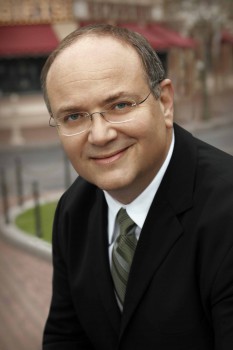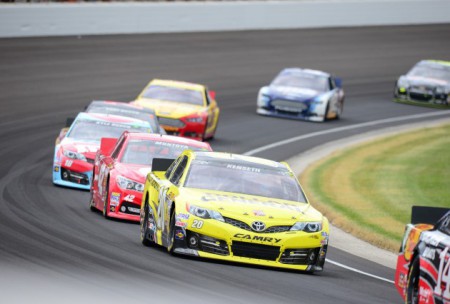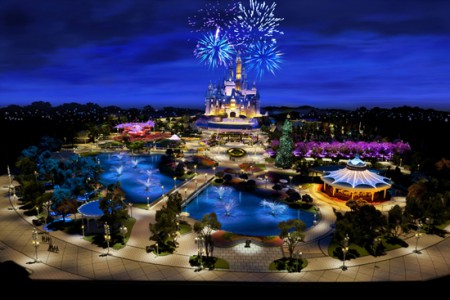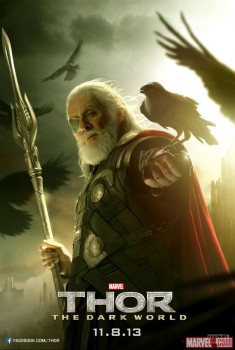Jay Rasulo Speaks
On September 12th, Jay Rasulo, senior executive vice president and chief financial officer, The Walt Disney Company, participated in a question-and-answer session at the Bank of America Merrill Lynch 2013 Media, Communications & Entertainment Conference. Here is my recap of what was discussed.
The session started with Jay being asked how will Disney continue to grow. He replied that they will continue to invest in branded content and increased distribution through technology and geography. 2015 will be a big year with Star Wars: Episode VII and Shanghai Disneyland. Disney is also looking for continued success from Marvel and Disney Channel.
Due to their success, Disney will have a significant cash flow. With this cash, Disney will continue to invest in businesses both organically and through acquisition. Their historic strategy has been 60 percent of capital spending goes to organic growth in existing businesses, 20 percent goes to acquisitions, and 20 percent goes back to shareholders through stock buy backs and dividends. In FY14, Disney plans to significantly increase share buy back with a target of 6-8 billion dollars up from about 4 billion. Disney will not let the repurchase bring down their debt rating even if they have to take on some debt to meet their repurchase targets.
Acquisitions have been for IP, such as Marvel and Lucasfilm and to increase distribution that spreads the Disney ecosystem such as UTV and Playdom. They don’t feel like there are any holes in Disney’s portfolio, but will remain opportunistic for things that may come up.
Disney is very happy with their TV channels and how they are performing. Disney is at the cutting edge of technology so the company will remain present as the pay TV landscape changes. ABC owned channels are number one in 7 of the 8 markets they have stations. Looking at how increased completion has affected ESPN, Jay brought up that since Fox Sports 1 launched, the increase in ESPN viewership equals their total viewership. The theme park over performance is credited to the recent investments made such as Cars Land in California and New Fantasyland in Florida. Disney feels that their strategy should be to give Guests what they want and to remain eager and willing to invest in the parks. International visitation was up 7% with UK and Brazil being drivers at Walt Disney World and Mexico, Australia, and Canada driving Disneyland’s international visitation. 17% of Guests are international at Walt Disney World, but recent investment is bringing in more domestic guests. Disneyland’s international visitation is about 10%. International Guests spend more. International Guests also stay longer. When asked how the NextGen efforts can help Disney’s bottom line, Jay said that My Magic + allows Guests to plan further out and when that occurs the Guests tend to stay longer. My Magic + will also allow Disney to tailor services to different types of Guests and increase the chances that Guests will partake of these services. In the end, they believe that all of these new services will improve the Guest experience and encourage more Guests to visit. So far, 125,000 Guests have used it.it , with roll out continuing through the end of the calendar year. Development expense is almost behind us, but they want to ensure the system is glitch-free. Shanghai Disneyland is on track to open at the end of the 2015 calendar year. The park will feature a blend of Disney content and Chinese interests. Guests want Disney, but also recognition of who they are and their culture. Shanghai Disneyland has the landmass to be the 2nd largest destination, eclipsing the Tokyo Disney Resort. Jay also expects to not be capacity constrained as they were in Hong Kong Disneyland, but they are ready to rapidly expand capacity if the demand warrants it. Disney sees it as a good sign that lots of theme parks are being built in Mainland China as it shows the growing middle class wants that form of entertainment. Looking at the studios slate most films will be franchise based with. 2 Marvel films, 1 Star Wars film, 1 from Disney Animation, 1 to 2 from Pixar, 1 to 3 live-action Disney tent poles, and some other Disney live-action non-tent pole films. Disney has learned, from films like The Lone Ranger, that there needs to be a cap on non-franchise tent poles. In passing, Jay did mention in passing that the non-saga Star Wars films will be origin stories.
Answering the question that proves most Wall Street analysts don’t know what they are talking about, Disney does not feel there will be any challenges to marketing Star Wars to children. Jay used the continued popularity of the Jedi Training Academy at the Disney parks as evidence that kids love Star Wars. (Duh). Jay also mentioned that Star Wars fits in very well in the parks.
The consumer products strategy for Star Wars is to first put out a good film. Star Wars is currently focused on toys, but will be expanding into other categories like Disney and Marvel. Star Wars products are currently US-centric and Disney will be expanding their portfolio internationally..
Disney is extremely happy with the early days of Infinity. And while it is currently in a start of school lull, they are anticipating big things for the holiday period. Sales have been a little bit better than Skylanders: Giants,. Age demographic is older than expected as the average age is about 13. They also got a bigger response from core-gamers than they anticipated as seen through the sales on next-gen consoles as well as gamer-focused retailers like GameStop.
All in all, Jay did a fine job navigating the questions and putting the company in a good light. While us fans probably know the company better than most investment bankers, it is an important community to keep appeased so Disney can focus on creating all that great content that we love. Though I do hope one of the folks asking questions will learn how to pronounce Marvel.






